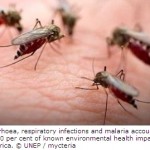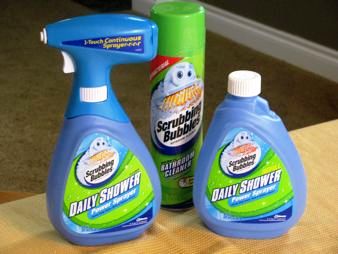Nairobi – More than 90 years after the League of Nations called for a ban on lead in paint, and despite the existence of many safe alternatives, young children and pregnant mothers in the developing world are still exposed to high levels of the dangerous toxin through unsafe paints.
A study by the United Nations Environment Programme (UNEP), released during the International Lead Poisoning Prevention Week of Action (organized by the Global Alliance to Eliminate Lead Paint in October), analyzed enamel decorative paints from nine countries: Argentina, Azerbaijan, Chile, Cote d’Ivoire, Ethiopia, Ghana, Kyrgyzstan, Tunisia and Uruguay.
The report finds that the majority of the paints tested would not meet regulatory standards established in most highly industrialized countries – for example, 90 parts per million (ppm) in the United States and Canada – and that some contain astonishingly high and dangerous levels of lead.
“In this day and age, it is quite frankly breathtaking that parents painting their child’s nursery a cheerful red, or handing their child a colourful toy may, through no fault of their own be exposing that child to a pernicious and damaging toxin: lead,” said Nick Nuttall, UNEP’s Spokesperson and Director of Communications.
“Each year, according to World Health Organization figures, childhood lead exposure contributes to an estimated 600,000 new cases of intellectual disabilities,” he added. “This report seeks to catalyze action by raising awareness among governments, manufacturers and consumers not just that the problem exists, but that there are cheap and safe alternatives to lead already in use that can lift this health burden in a very short time.”
WHO research shows that 99 per cent of children affected by high exposure to lead live in low- and middle-income countries. An estimated 143,000 deaths per year result from lead poisoning and lead paint is a major contributor to this.
“Lead poisoning remains the number one environmental health concern for children globally, and lead paint is a major flashpoint for children’s potential lead poisoning,” said Dr. Maria Neira, WHO Director for Public Health and Environment. “The good news is that exposure to lead paint can be entirely stopped through a range of measures to restrict the production and use of lead paint.”
Worldwide, 30 countries have already phased out the use of lead paint. The Global Alliance to Eliminate Lead Paint, co-led by WHO and UNEP, has set a target of 70 countries by 2015.
“In 2002, at the World Summit on Sustainable Development, governments agreed a goal that by 2020 chemicals should be used and produced in ways that lead to the minimization of significant adverse effects on human health and the environment-action to ban paint with excessive lead will assist towards this 2020 goal,” Mr. Nuttall said.
A total of 234 cans of enamel decorative paint were purchased and tested in a lab in the United States, with the assistance of IPEN, a global network of health and environmental non-governmental organizations that has collected and analyzed decorative paints in more than thirty developing countries and countries with economies in transition.
The report finds that few nations have established regulatory frameworks, but those that have generally exhibit lower lead paint levels. Both Chile and Uruguay have national executive decrees that prohibit the production, import, distribution, sale and use of decorative paints with a lead concentration above 600 ppm, and all of the paints tested in these two countries had low total lead concentrations.
In each of the other seven countries, however, two or more of the samples of enamel decorative paints had lead content greater than 10,000 ppm.
In four of these countries, at least one of the decorative paints tested had a lead concentration at or above 99,000 ppm lead. In five of the nine countries, more than half of the decorative paint samples tested had lead content greater than 600 ppm lead, the regulatory limit in many other countries.
Despite the high levels of lead – which is normally added as a pigment and is therefore most present in bright colours such as yellow and red -only 20 out of the sampled paint cans offered information about lead content, the vast majority in Uruguay.
While the report covers nine countries, previous research by IPEN and others shows that lead levels remain high in other countries with economies in transition. For example, a study in published in September 2012 by the Kenyan NGO iLima found an average lead concentration of 14,900 ppm in 31 samples of household paint.
Over the last seven years, similar studies found equally unsettling concentrations in other African nations: Cameroon, 23,100 ppm; Egypt, 26,200; Nigeria (two studies), 37,000 and 15,750 ppm; Senegal 5,870 ppm; South Africa, 19,860; and Tanzania 14,500 ppm.
“While this study shows many nations face a grave problem, it always very clearly demonstrates that established and enforced government regulations on lead levels in paint have a strong positive impact,” said Sara Brosche, Project Manager for IPEN’s lead paint projects. “However, paint manufactures have a responsibility to act on their own, particularly when there is virtually no associated negative economic impact for their businesses. There is absolutely no reason why paints with high levels of lead should continue to be sold and poison children.”















